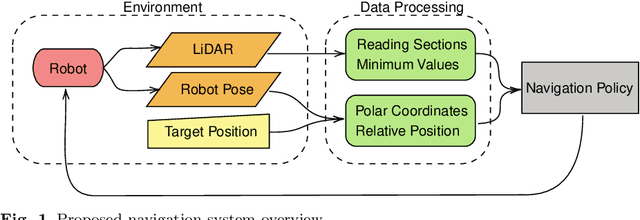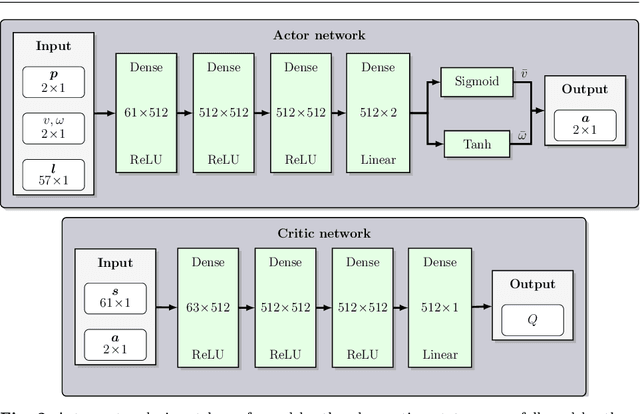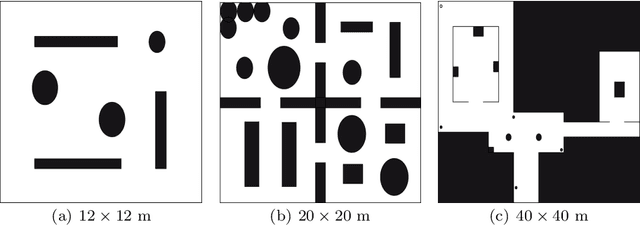Gustavo M. Freitas
On the Generalization of Deep Reinforcement Learning Methods in the Problem of Local Navigation
Sep 28, 2022



Abstract:In this paper, we study the application of DRL algorithms in the context of local navigation problems, in which a robot moves towards a goal location in unknown and cluttered workspaces equipped only with limited-range exteroceptive sensors, such as LiDAR. Collision avoidance policies based on DRL present some advantages, but they are quite susceptible to local minima, once their capacity to learn suitable actions is limited to the sensor range. Since most robots perform tasks in unstructured environments, it is of great interest to seek generalized local navigation policies capable of avoiding local minima, especially in untrained scenarios. To do so, we propose a novel reward function that incorporates map information gained in the training stage, increasing the agent's capacity to deliberate about the best course of action. Also, we use the SAC algorithm for training our ANN, which shows to be more effective than others in the state-of-the-art literature. A set of sim-to-sim and sim-to-real experiments illustrate that our proposed reward combined with the SAC outperforms the compared methods in terms of local minima and collision avoidance.
Autonomous Navigation System for a Delivery Drone
Jun 16, 2021



Abstract:The use of delivery services is an increasing trend worldwide, further enhanced by the COVID pandemic. In this context, drone delivery systems are of great interest as they may allow for faster and cheaper deliveries. This paper presents a navigation system that makes feasible the delivery of parcels with autonomous drones. The system generates a path between a start and a final point and controls the drone to follow this path based on its localization obtained through GPS, 9DoF IMU, and barometer. In the landing phase, information of poses estimated by a marker (ArUco) detection technique using a camera, ultra-wideband (UWB) devices, and the drone's software estimation are merged by utilizing an Extended Kalman Filter algorithm to improve the landing precision. A vector field-based method controls the drone to follow the desired path smoothly, reducing vibrations or harsh movements that could harm the transported parcel. Real experiments validate the delivery strategy and allow to evaluate the performance of the adopted techniques. Preliminary results state the viability of our proposal for autonomous drone delivery.
 Add to Chrome
Add to Chrome Add to Firefox
Add to Firefox Add to Edge
Add to Edge